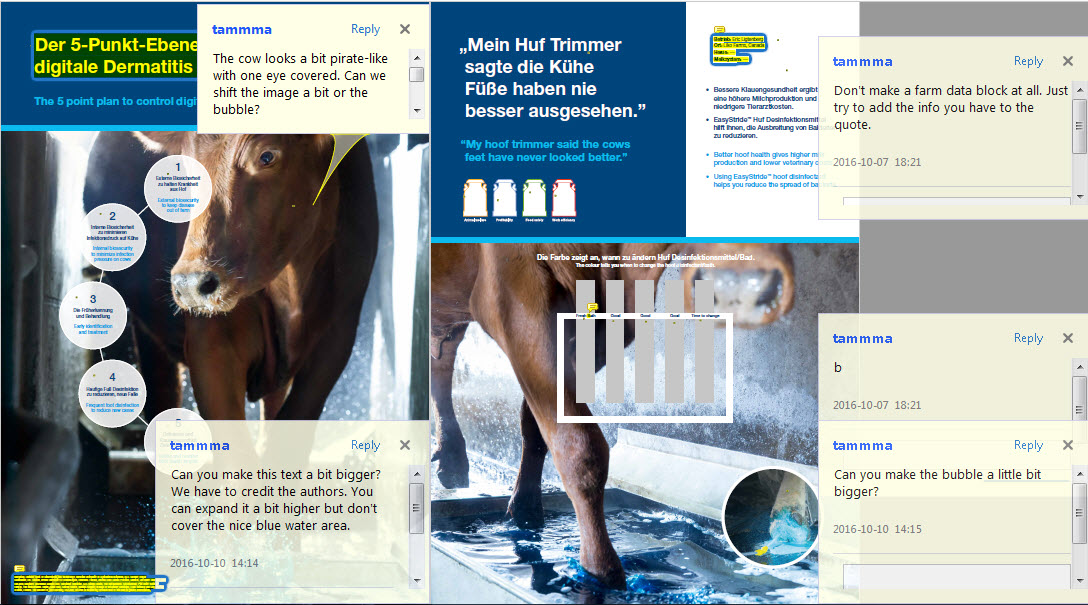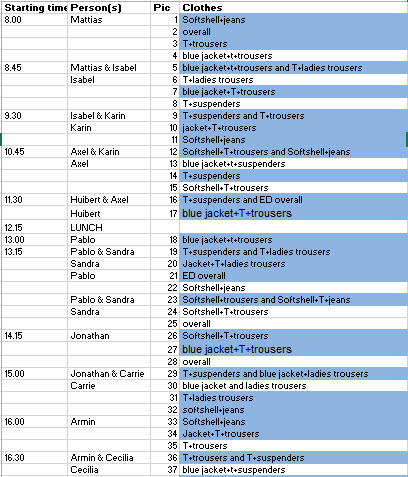Since I am in a writing mood after a while, I wanted to get some more thoughts out in text format. I’ve been thinking a lot about how to say something. People take things differently. Misunderstandings happen. Especially in written format. Cultural differences play a role and the harsher the message, the harder it might be to convey an important message without hurting anyone’s feelings. After all, most people don’t like to be criticized and creative people can be extra sensitive. I am still trying to improve myself regarding both – giving and receiving criticism.
Today I want to focus still on marketing feedback. It is very important and often useful, unless the feedback is utterly positive and even when the criticism is constructive, it can be hard to take. Creative arts are also not as black and white as maths, for example. Often things come down to a gut feeling, context and personal preferences and experiences. Think how differently an innocent child and a grownup might react when someone tells them that they resemble a cow. Therefor, sometimes I really struggle with how to explain in short what I think is wrong.
Spelling game
It is pretty easy to point out a spelling mistake but even that is sometimes arguable. If it hasn’t been agreed upon first which spelling should be used, then several options can be correct. Think about the differences of American and British English. Now add to the pile Australian and Indian. They all have differences despite speaking pretty much the same language. Should one use S or Z; add the letter U or not. Is one taking an exam or giving an exam? Riding a lift or an elevator? A lot of international companies have made a decision which language version to use in their official communication and still errors of not knowing better happen all the time if we are not dealing with native speakers and actually also if we are. Yet a concrete decision makes the lives or marketing and communication people a lot easier and there is no excuse for them to not follow it. And nowadays automatic spell checkers do most of the job for us.
Logic errors
Logic errors are so common even if you might not think so and notice them. They happen even to experienced copywriters and not only in technically complicated texts due to lack of knowledge. They happen everywhere and can make you look stupid in front of a more critical reader or listener.
Sometimes it is a question of using a word wrongly. For example, when marketing for agricultural industry, a copywriter needs to know where to use the word “fertilization” and where “insemination” and the difference between “killing” and “culling”. People and animals might be fertile, but fertilizers are used on fields of crops and animals are inseminated. But if you didn’t know that, it is still ok. As a production manager, I will catch it while doing quality check.
Sometimes it is just a simple question of singular and plural like here:
“unit has an ergonomic bristles”
Other times it can be easily missed when scanning a text:
“it can be installed in areas without electricity connection or lack of space.”
The original sentence was longer and carried even more facts, making it harder to spot the mistake, but did you? But if you deduct now the part of the sentence that isn’t really important, it turns into “it can be installed in areas without lack of space.” That can be true, but how often does a marketing text intend to brag about something taking lots of space? Correct me now if I am wrong as I am not a native speaker but I can currently see a few ways to fix this sentence with minor changes.
Option 1:
It can be installed in areas without electricity or with lack of space.
Option 2:
It can be installed in areas without electricity that also might lack space.
Option 3:
It can be installed in areas without electricity or lacking space. (Not 100% sure about this one)
Option 4:
It can be installed in areas without much space or electricity. (My favourite as it seems the clearest)
Question of style
Sometimes there might not be anything wrong – technically – and yet it strikes a nerve. For example, I’ve reacted recently badly to a copywriter starting a catalogue unit text for a brand new product by calling it “entry-line”. Yes, compared to some other products, it is a simple and more affordable solution, but entry-line sounds to me like basic in a bad way. No-one likes to feel cheap or underdeveloped and these are the connotations I have with that phrase. Those might not apply to everyone, but I believe I am not the only one who feels this way. Therefor I prefer to warn copywriters about my perspective so that they can phrase it better. Simple can be good as long as you don’t call a person simple. Also affordable might work because everyone likes a good deal.
Another example of bad style that a product specialist recommended and copywriter used without changing anything:
“We would like to think that with the XXX tomorrow’s farming is already here today.”
Firstly, I’d question the word order but as a non-native English speaker I am never 100% certain about that myself and would like to trust a copywriter who has reviewed it. How does it sound to you otherwise? It hints that our product is very innovative – which is great. The construction that with XXX the future is here sounds a bit fishy to me as well. I don’t have the perfect phrasing ready yet, but perhaps it could say instead: “Product XXX gives you a taste of (what) the future (will be like)”. But I don’t think that taste is the best word here even though we are talking about a food industry product.
The worst thing about that sentence is using the words “would” and “like” as it is done now. There’s nothing wrong with the words themselves but they lack confidence. It sounds a bit like “ideally we could claim that product XXX is very innovative, but we don’t believe that ourselves really either”. And if you don’t seem to believe in your product, why should others?
I know that bragging might backfire in some cultures and this was written in Sweden by a Swede, but how much stronger would the claim be if phrased like: “We think that with XXX tomorrow’s farming is here already today”? Do you see the difference?
Sometimes it feels like there is too much of something. Other times something seems to be missing like here:
“How often do you inspect and service your XXX? It should be at least annually.”
As this example comes from a social media post, I understand that character number might have been limited but this seems like lazy spoken language and yet uses complicated words like annually.
I’d say rather: “It should be done at least annually” but to my ear it sounds even better to say: “It should be done at least once per year.” Do you agree?
I am also adding a few PDF files where you can see work done on symbol logic as well as text. You will see a lot of comments on very simple illustrations because when we received those first drafts, it felt like the illustrators had picked out some random interesting keywords and claims from the accompanying text instead of really thinking through the logic how those things work. For example, what are the features and what the benefits of something. What is the illustration focusing on? A robot or a service? What kind of different things must one symbol cover? What kind of language is used?
I’ve tried to give now very different examples from the actual marketing materials I have worked on and since this is my blog, I allow myself to use more direct speech than I might when I would actually be giving feedback to the creators of those texts. Believe me, I choose and chose kinder words in reality, but I expect all my partners to be grown up professionals and if they keep providing me with poor quality texts, then eventually I will become more concrete and harsh in my feedback. Especially when I am in a rush to finalize something.
I hope you found something useful if you read through all of this. If not more than at least another perspective.




